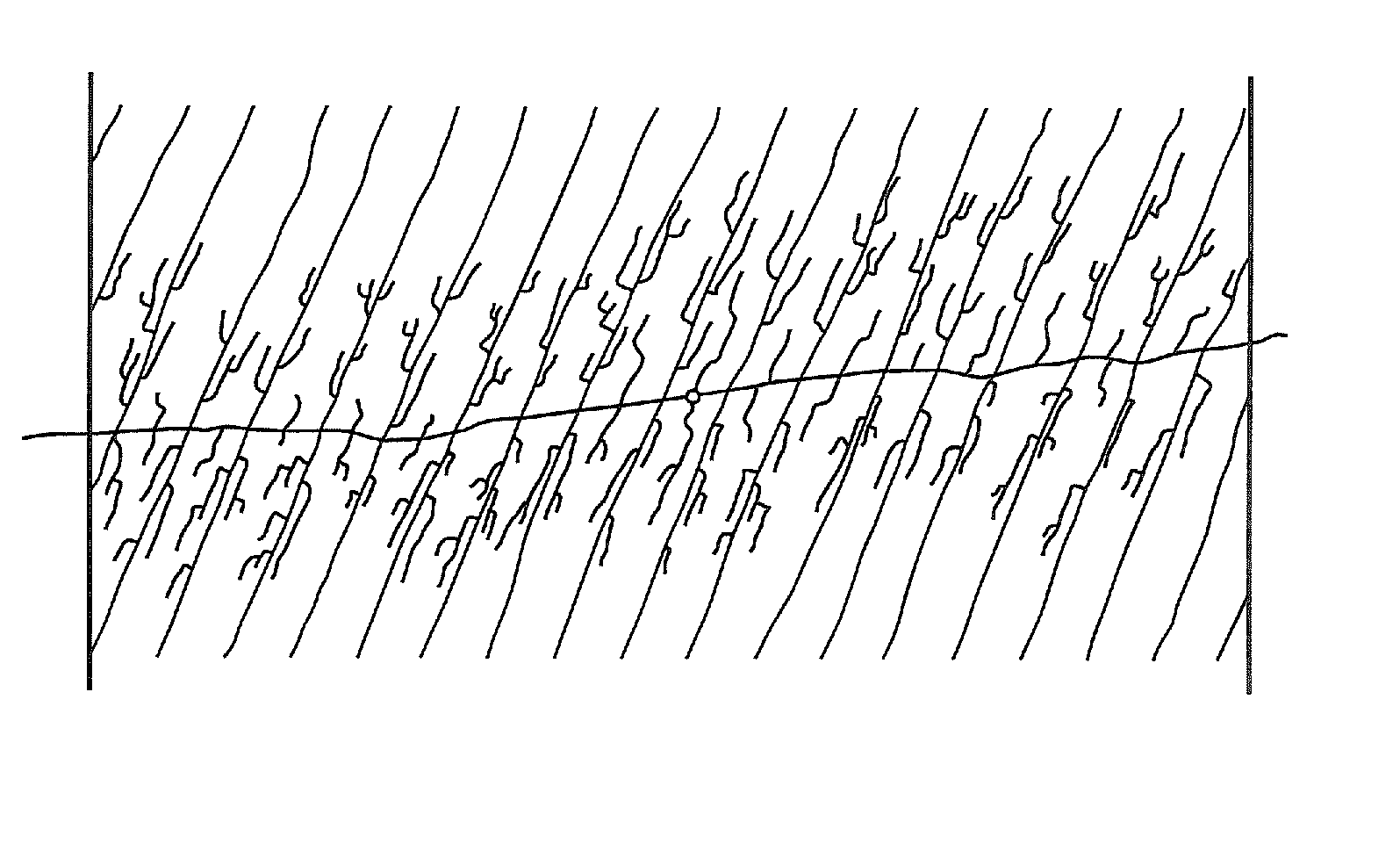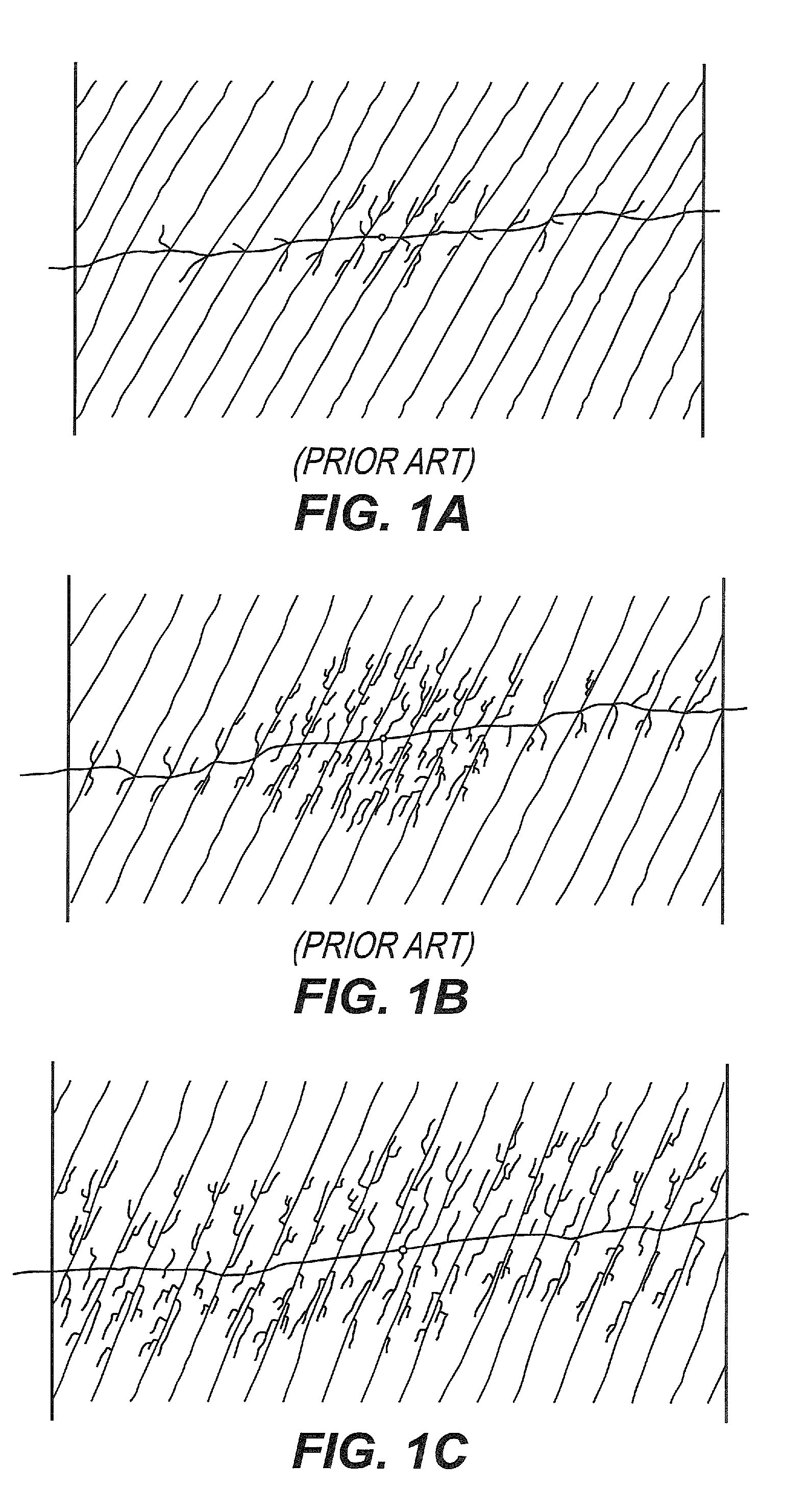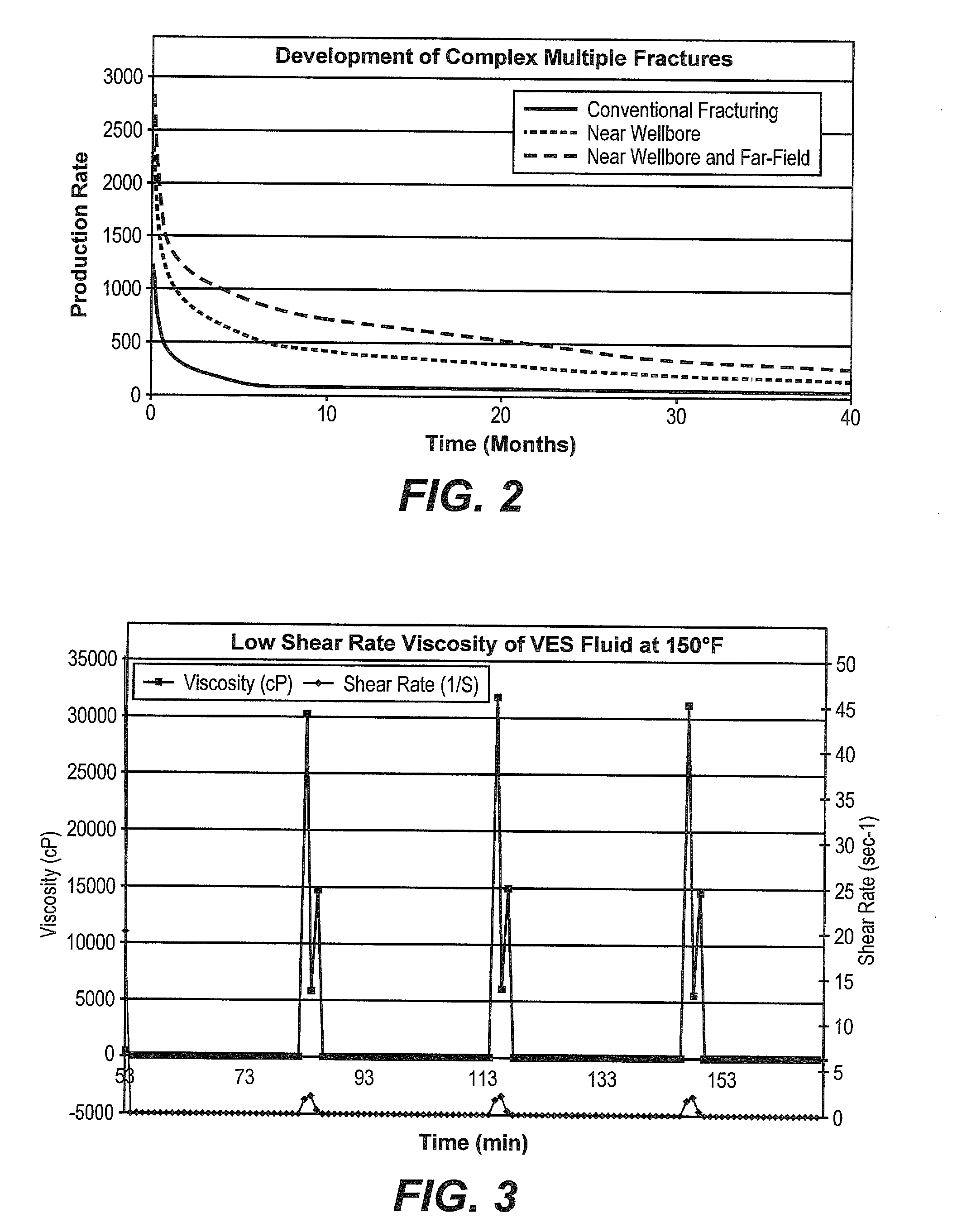Method of Increasing the Permeability of a Subterranean Formation by Creating a Multiple Fracture Network
a subterranean formation and multiple fracture technology, applied in the direction of fluid removal, borehole/well accessories, chemistry apparatus and processes, etc., can solve the problems of clogging the pores of the formation and proppant pack, affecting the permeability of the subterranean formation, and the formation is left with residual polymer, etc., to achieve widen the distribution of fracturing pattern, high viscosity, and high shear
- Summary
- Abstract
- Description
- Claims
- Application Information
AI Technical Summary
Benefits of technology
Problems solved by technology
Method used
Image
Examples
Embodiment Construction
[0043]Illustrative embodiments of the disclosure are described below as they might be employed in the operation and treatment of oilfield applications. In the interest of clarity, not all features of an actual implementation are described in this specification. It will of course be appreciated that in the development of any such actual embodiment, numerous implementation-specific decisions must be made to achieve the developers' specific goals, which will vary from one implementation to another. Moreover, it will be appreciated that such a development effort might be complex and time-consuming, but may nevertheless be a routine undertaking for those of ordinary skill in the art having the benefit of this disclosure. Further aspects and advantages of the various embodiments of the disclosure will become apparent from consideration of the following description.
[0044]The production of hydrocarbons from a subterranean formation is enhanced by the methods described herein. In addition to...
PUM
 Login to View More
Login to View More Abstract
Description
Claims
Application Information
 Login to View More
Login to View More - R&D
- Intellectual Property
- Life Sciences
- Materials
- Tech Scout
- Unparalleled Data Quality
- Higher Quality Content
- 60% Fewer Hallucinations
Browse by: Latest US Patents, China's latest patents, Technical Efficacy Thesaurus, Application Domain, Technology Topic, Popular Technical Reports.
© 2025 PatSnap. All rights reserved.Legal|Privacy policy|Modern Slavery Act Transparency Statement|Sitemap|About US| Contact US: help@patsnap.com



